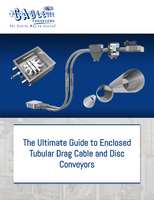Federal Government mandates standard for state building codes.
Press Release Summary:
ANSI/ASHRAE/IESNA 90.1-2004, Energy Standard for Buildings except Low-Rise Residential Buildings, has been established by Department Of Energy as commercial building reference standard for state building energy codes under federal Energy Policy Act. Under revised provisions of Act, all states must certify that their energy codes are compliant with regulations of ANSI/ASHRAE/IESNA 90.1-2004, and noncompliant states must justify why they cannot follow standard.
Original Press Release:
American National Standard Mandated in Revisions to Federal Energy Policy Act
The U.S. federal government has demonstrated its continued support of American National Standards (ANS) by selecting one such standard to become mandatory for state building codes. ANSI/ASHRAE/IESNA 90.1-2004, Energy Standard for Buildings except Low-Rise Residential Buildings, has been established by the Department Of Energy (DoE) as the commercial building reference standard for state building energy codes under the federal Energy Policy Act.
Under the revised provisions of the Act, all states must certify that their energy codes are compliant with the regulations of ANSI/ASHRAE/IESNA 90.1-2004. Noncompliant states must justify why they cannot follow the standard.
ANSI/ASHRAE/IESNA 90.1-2004 is an ANS developed jointly by the American Society of Heating, Refrigerating, and Air-Conditioning Engineers (ASHRAE) and the Illuminating Engineering Society of North America (IESNA). This standard provides minimum energy-efficient requirements for the design and construction of new buildings and their systems, new portions of buildings and their systems, and new systems and equipment in existing buildings. The document also details criteria for determining compliance with these requirements.
Both ASHRAE and IESNA are members and accredited standards developers of the American National Standards Institute (ANSI).
Previously, the Act mandated compliance with ANSI/ASHRAE/IESNA 90.1-1999, an earlier version of the standard. The updated standard provides greater energy savings with changes made through thirteen specifications, including additional insulation requirements for buried ductwork, lower retail sales lighting power alliance, requirements for heat pump pool heaters, and others.
The ruling, published in the December 30, 2008, issue of the Federal Register, reads "[t]he quantitative analysis of the energy consumption of buildings built to Standard 90.1-2004, as compared with buildings built to Standard 90.1-1999, indicates national source energy savings of approximately 13.9 percent of commercial building energy consumption. Site energy savings are estimated to be approximately 11.9 percent."
For more information, see the ASHRAE press release.




